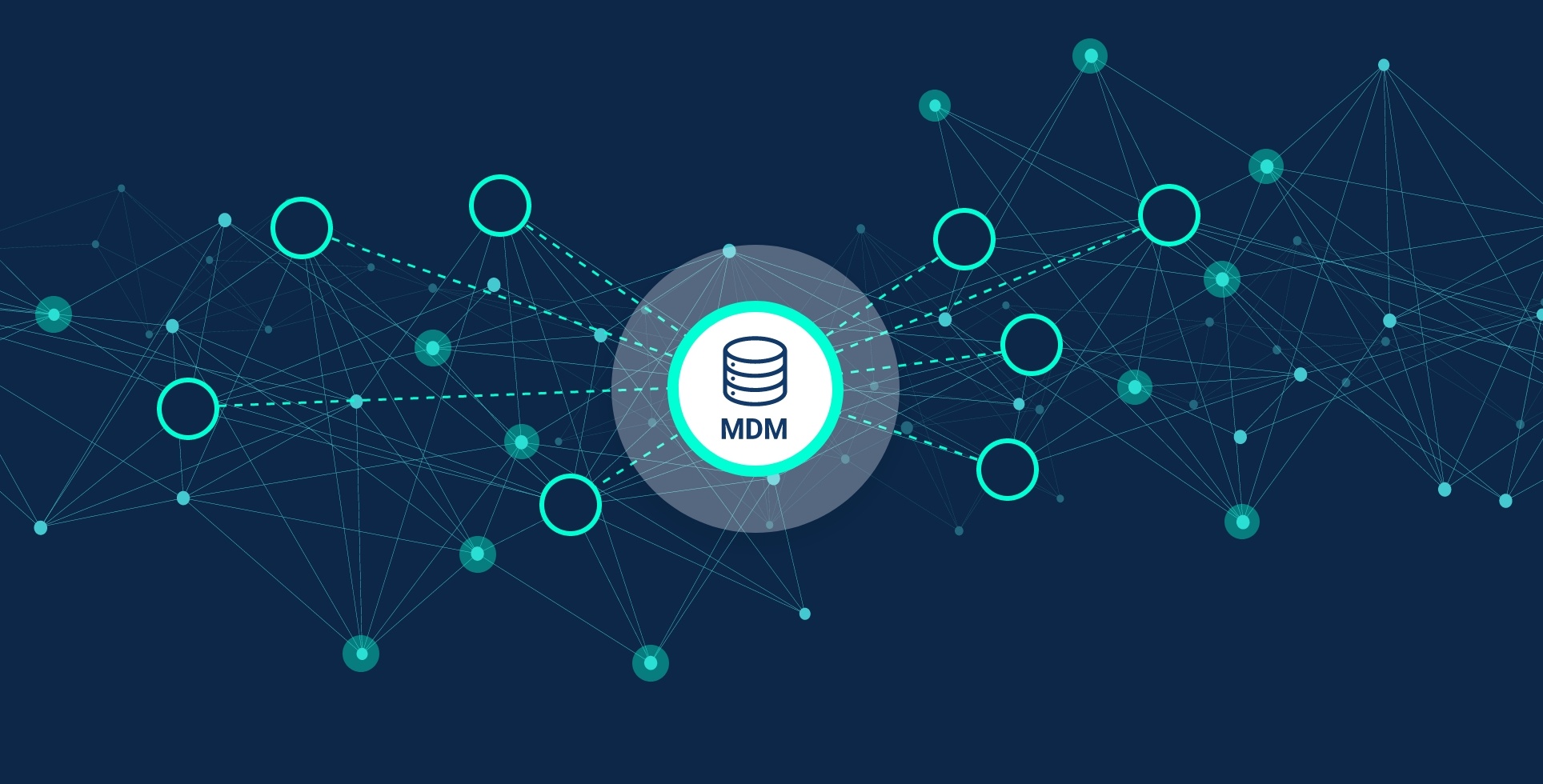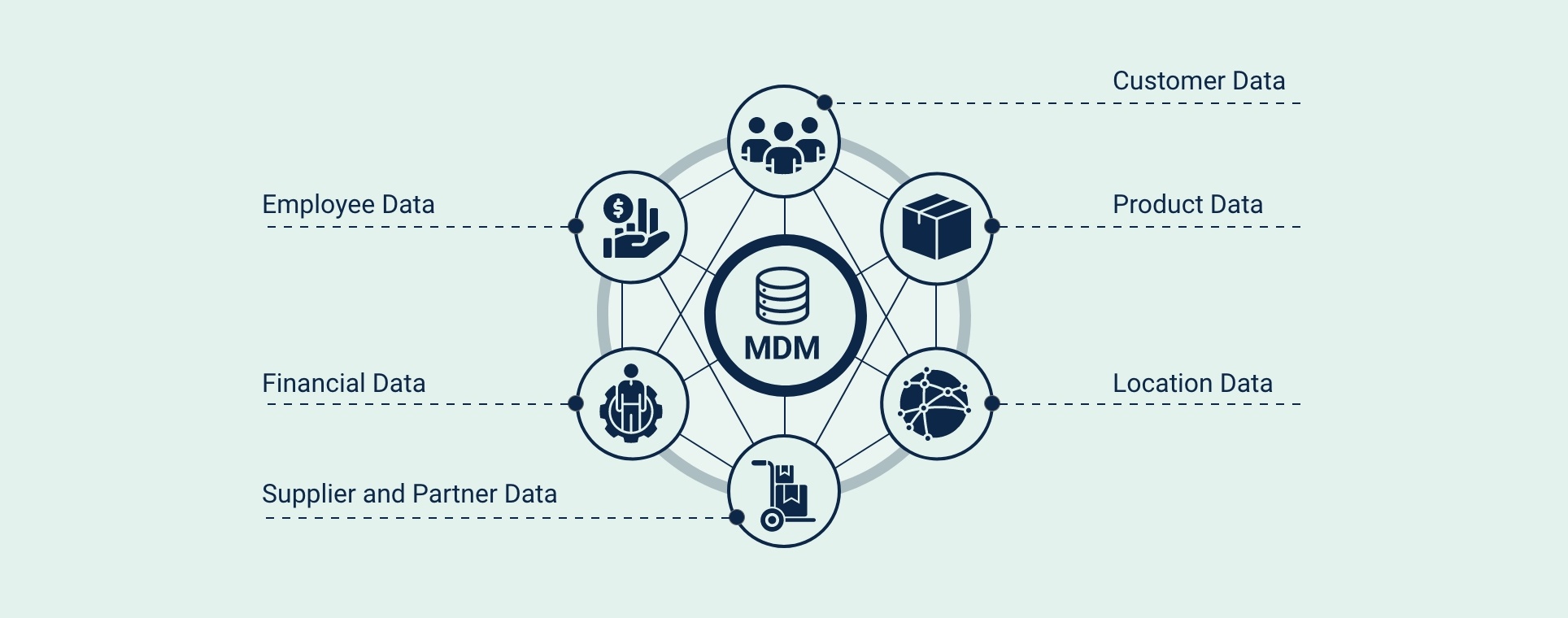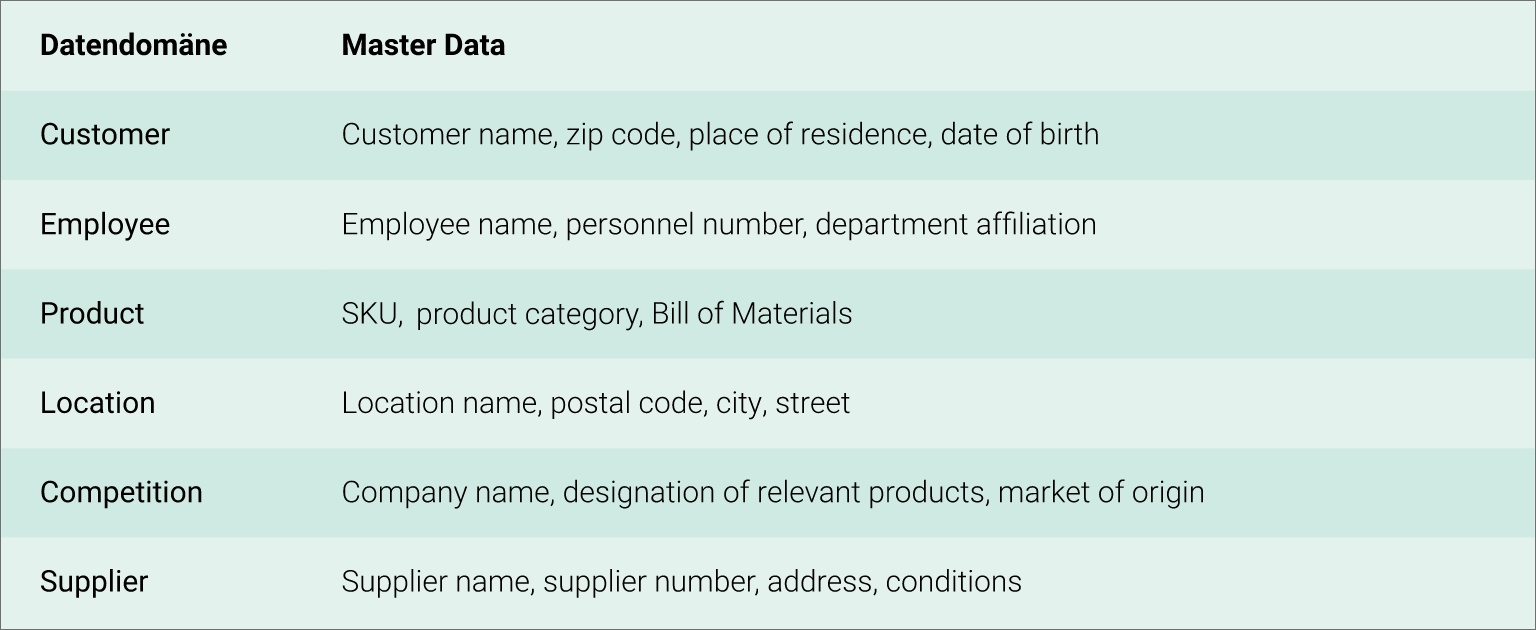Blog
What is Master Data Management (MDM)?
Definition and Meaning

1. What is Master Data Management?
Master data refers to information about these domains that is shared consistently across all relevant business areas. It is primarily used to identify key entities like products, customers, suppliers, or locations.
MDM plays a crucial role in connecting master data across different departments and systems, enabling deeper insights into business processes and central key performance indicators (KPIs).
2. MDM – Key Takeaways
Master Data Management (MDM) delivers valuable insights into your organization’s operations.
This article explores the growing significance of MDM for businesses and outlines essential best practices.
3. The Importance of MDM for Companies
The vision of becoming a “data-driven company” has gained traction among organizations aiming to take the next critical step in their digital transformation journey.
While some may simplify the concept to mean that decisions are solely based on reliable data, the reality is far more complex.
In a truly data-driven organization, all core data processes are as digitized as possible and, wherever feasible, automated and seamlessly interconnected. This level of integration forms the foundation for greater agility, enabling companies to respond quickly and effectively to changing market conditions.

Master Data Management (MDM) plays a crucial role in achieving a data-driven organization. By serving as a centralizing and unifying system, MDM consolidates all core master data, enabling a connected and comprehensive view of critical business contexts.
Here are the key advantages MDM offers to companies:
- Enhanced Transparency: A unified data perspective allows businesses not only to measure and monitor success but also to gain deeper insights into underlying factors driving performance.
- Improved Control: With greater transparency, organizations can take targeted actions to optimize results and drive long-term success.
- Superior Data Quality: MDM ensures higher data quality across the company by standardizing rules for data preparation and storage. According to Gartner, businesses that adopt MDM solutions can improve data quality by up to 20% (Gartner: The Value of Master Data Management, 2022).
- Sustainable Business Growth: A fully implemented MDM system supports sustainable business development, helping companies maintain a competitive edge over time.
4. Examples of Master Data
Master data refers to domain-specific information that is utilized across various departments within a company, making it essential for multiple business processes.
The primary purpose of master data is to uniquely identify key business entities, such as customers, products, or locations. Typically, master data remains relatively stable over time, maintaining its relevance and importance for extended periods.
To clarify, here are a few examples:

Master data can vary significantly depending on a company’s industry, size, and specific business objectives. Naturally, not all data domains are equally relevant to every organization.
As a result, Master Data Management (MDM) is a highly tailored endeavor. While it offers immense potential for improving operations and decision-making, it also presents unique challenges that must be carefully addressed.
5. Best Practices for MDM Implementation
The success of Master Data Management (MDM) implementation relies heavily on aligning with individual business processes, goals, and priorities. Careful planning and thoughtful design are critical. This includes identifying and incorporating all relevant data domains, business areas, stakeholders, and data workflows. Only by addressing these elements can organizations ensure that key requirements are met during the selection, design, and deployment of an MDM solution.
While MDM focuses on managing, maintaining, and connecting data in meaningful ways, it also serves as the foundation for several critical cross-organizational initiatives:
6. What is the Difference Between MDM and PIM?
A common question is whether companies that implement a Master Data Management (MDM) system covering the product domain still need a Product Information Management (PIM) system. After all, both solutions manage and maintain product data.
The answer lies in the distinct use cases for which these solutions were designed:
Why MDM?
The primary goal of MDM is to centralize and consolidate master data, offering comprehensive internal data perspectives. It focuses on providing a single source of truth for organizational use, ensuring consistency across systems and departments.
Why PIM?
A PIM system is designed to support external product communication by managing product descriptions, marketing texts, and—when integrated with Digital Asset Management (DAM)—media content like images, videos, and documents. PIM systems enable creative workflows and facilitate the distribution of product content, making them essential for managing the product content lifecycle.
This distinction makes the question of “PIM or MDM?” irrelevant. Instead, MDM should be viewed as a complementary component in the digital value chain of product communication. Deep integration between PIM and MDM is essential for effective master data management and seamless product communication.
Regardless of which solution you prioritize, it is critical to understand your business requirements and select systems that align with your goals. Properly networked solutions can enhance your operational efficiency and ensure you meet your objectives.
Concluding Remarks
Master Data Management (MDM) is an invaluable tool for companies looking to enhance value creation across their various business areas. When properly designed and implemented, MDM improves data quality across all processes while providing a comprehensive, unified view of the business. This, in turn, unlocks significant potential for driving innovation and developing successful new business models.
That said, the challenges involved in an MDM project should not be underestimated. If you have questions about the technical implementation of master data management, don’t hesitate to reach out. Our growing network of digitalization experts is here to assist you.
Highlighted Whitepaper
ePaper: Strategic Product Content Management with PIM & DAM
Comment optimiser la gestion du contenu produit pour un succès à long terme : Découvrez comment rationaliser vos flux de travail avec PIM et DAM. Notre livre blanc offre des informations pratiques et des stratégies éprouvées pour vous aider à mettre en place une approche évolutive, efficace et pérenne de la gestion du contenu produit.
Accomplir plus ensemble
Nous croyons en la valeur de la collaboration et de l’échange. Cela s’applique aussi bien à nos projets clients, desquels nous tirons de nombreuses informations précieuses pour le développement de nos produits, et à notre réseau de partenaires en pleine expansion, avec lequel nous soutenons nos clients dans leur numérisation.



